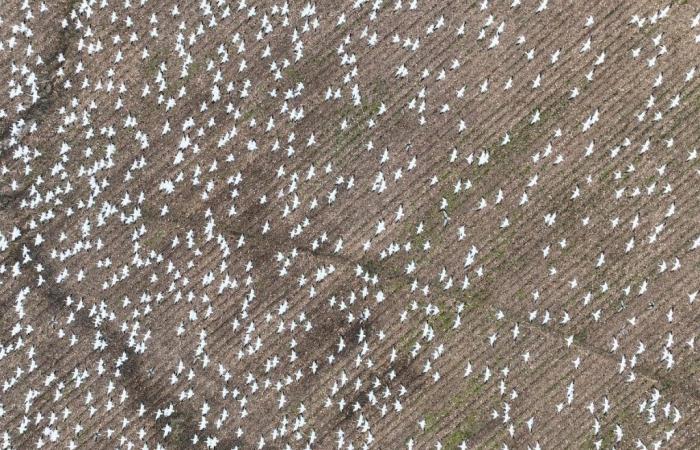The first results of the laboratory investigation have been received from the Scientific Institute of Food Safety, Animal Health and Environment “Bior”, which indicates the presence of the bird flu virus gene in seven of the 11 dead wild birds from the Daugavpils Esplanade pond.
PVD stated that the type of avian influenza virus isolated is H5N1. This type has also been found in Latvian wild birds in previous years. Currently, H5N1 is the dominant bird flu type in other European countries as well. Laboratory investigations are still ongoing to determine the pathogenicity of the H5N1 type of avian influenza virus.
PVD calls on residents not to visit the mentioned territory and not to touch dead birds, in order not to endanger their health and prevent further spread of the disease. PVD also asks not to allow domestic animals to access this area and not to bring sick and tired wild birds home, to animal shelters or veterinary clinics, because bird flu is incurable.
It has already been reported that PVD expressed its suspicions about the outbreak of highly pathogenic bird flu in the population of great egrets living in Daugavpils Esplanade pond. PVD inspectors removed samples for laboratory examination.
In order to protect Latvian poultry from infection with highly pathogenic bird flu, poultry farms must comply with enhanced biosecurity requirements until May 15.
In March of this year, an outbreak of highly pathogenic avian influenza was detected in a poultry house in both Estonia and Lithuania. In Lithuania, a small shed was affected, while in Estonia, more than 160 different species of birds were kept in a shed, including laying hens, ducks, geese, pigeons and peacocks.
Highly pathogenic avian influenza is an acute, highly contagious infectious disease of birds characterized by high mortality. Reservoirs and distributors of the virus in nature are wild birds, especially waterfowl, which can develop the disease without characteristic symptoms. Poultry can become infected by coming into contact with infected wild birds. Birds can also be infected with contaminated water, feed or objects (shoes, clothing, equipment) on which the virus has come.
PVD informed that last year in Lithuania and Estonia bird flu was not detected in poultry houses. On the other hand, in 2021, the disease was detected in three shelters in Estonia, and in 54 shelters in Lithuania.
So far, the highly pathogenic bird flu has been detected only in wild waterfowl in Latvia. Last year, the first case of bird flu in wild birds in Latvia was detected in January, when bird flu was detected in six swans. It was the only case of illness registered in Latvia in 2022.
Highlight the text and press Ctrl+Enterto send the text fragment to be corrected to the editor!
Highlight the text and press on Report a bug buttons to send the text fragment to be corrected to the editor!
Report a bug






